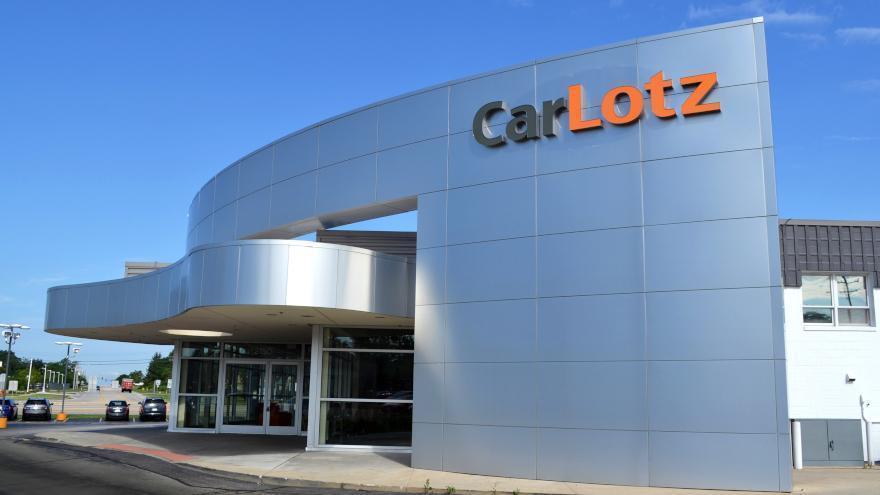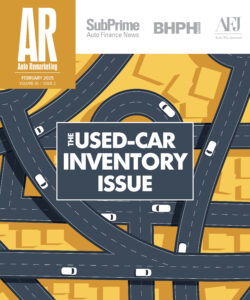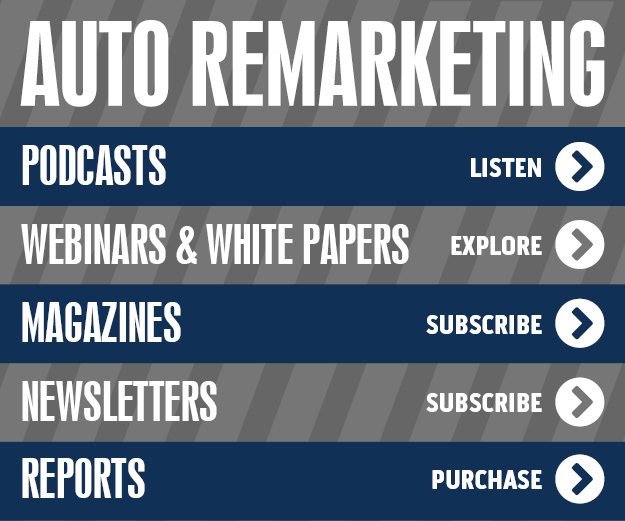CarLotz explains impact of consignment pause from sourcing partner

File photo CarLotz location near Chicago. Photo courtesy of the company.
CarLotz filed a Form 8-K with the Securities and Exchange Commission on Wednesday, explaining that its “profit-sharing corporate vehicle sourcing partner” has notified CarLotz that it has paused consignments to the company, given the condition of the wholesale vehicle market.
CarLotz declined to share the name of the sourcing partner, citing a legal agreement, but Auto Remarketing caught up with chief executive officer Michael Bor on Wednesday for additional context.
“This account has been working with us for over a year, so (a) relatively new account. We grew with them nicely,” Bor said. “But the last few months, the wholesale market has obviously been on absolute fire.
“And they made the decision to take advantage of some of these real-time wholesale values versus the retail route,” he said. “And the retail route is always going to be higher than wholesale, but when wholesale is this high, the incremental couple thousand dollars can sometimes be a harder decision in times like we're in now.”
During the first quarter, the sourcing partner accounted for over 60% of the vehicles CarLotz sold and over 60% of the vehicles it sourced, the company said in a news release.
So far in the second quarter, the sourcing partner has accounted for less than half of the vehicles CarLotz has sold and about a quarter of the vehicles it has sourced.
The pause from this sourcing partner plus rising wholesale vehicle prices and fallout from the chip shortage has certainly presented a challenge for CarLotz in terms of sourcing. But Bor explains in the news release how the company has adapted.
“The surge in wholesale vehicle prices and the continuing new-car chip shortage continues to place limitations on inventory sourcing throughout the industry,” Bor said in a news release. “This fact, combined with the pause of our profit-sharing account, has created challenges in obtaining our expected inventory levels.
“Over the last several months, we have been taking steps designed to increase our sourcing from other channels to address the market challenges, and we expect that they will increase our access to vehicles from consumer consignments, trade-ins and consumer purchases and enhance our ability to profitably source vehicles through auctions,” he said.
“In addition, we remain focused on our goal of increasing our non-competitive sourcing through consignment and bulk buys by adding new corporate vehicle sourcing accounts and increasing our penetration with our existing corporate vehicle sourcing partners.”
Bor added some additional context to that strategy during the interview.
He explained that inventory at CarLotz typically comes from four sources, three of which are called “non-competitive sourcing channels,” including:
— Consumer consignment
— Commercial consignment
— Buying from consumers or consignors (Bor said a given consumer or commercial consignor, at times, may prefer to sell than consign a vehicle)
The fourth inventory source is the “competitive sourcing channels,” which would be buying from an auction or the open market.
“Earlier this year, when we started seeing the wholesale market rising like it had, we started building out our capabilities on the buying side to fill any gaps that might exist with some commercial consignors shifting their volumes more towards wholesale from retail, temporarily,” Bor said in the interview. “And so, we started building out those capabilities and we also started investing heavily in technology and marketing to supercharge our consumer consignment channel.
“As a result of the broader wholesale market that we're seeing, we really started investing heavily in these other channels and then it's just that, when this account paused, it just gave us the opportunity to further lean into some of those tactics we were using.”
Bor said he doesn’t anticipate this wholesale price surge lasting forever, saying that eventually, the wholesale and retail used-car spread will get back to normal.
“I can't imagine wholesale prices will be going up 10% every month to eternity, so at some point, it flattens out. and then the spread between wholesale and retail kind of re-establishes itself and then our ability to sell at retail then returns to its high value,” Bor said in the interview.
The pausing of the sourcing partner will not impact CarLotz’s plans to roll out 14 to 16 hubs this year.
But a few logistical factors have pushed a few hubs back “a few weeks here and there,” Bor said.
In the release, he said: “Our new hubs have performed well, our new hub pipeline remains strong and we continue to expect 14 to 16 hub openings this year. Since our last earnings release, however, the makeup and timing of the pipeline rollout has changed as a result of various factors, including negotiations, licensing and zoning. As a result, the grand openings of a few new hub locations will come later in the year than originally planned, and the 2021 contribution from those hubs will be less than previously anticipated due to the timing.”
In Wednesday’s release, CarLotz provided an update on its 2021 outlook and financial guidance and comments regarding its expected Q2 performance that it had provided on May 10.
The updated guidance is due to “the current business climate, as impacted by the lack of vehicles from this profit-sharing account, coupled with the unpredictable timeline of the chip shortage for new cars and its impact on the wholesale and retail automotive markets” and “the slippage in certain hub openings to later than previously expected,” CarLotz said.
The updated 2021 outlook, which is below, assumes that CarLotz will retail than 2,000 units in Q2 and hit gross profit per unit of at least $1,800.
As listed in the release, the updated guidance is below:
|
New Hub Openings |
14 to 16 hub openings, most of which are expected to open in the back half of the year |
|
Retail Units Sold |
13,000 to 15,000, which represents more than a 100% increase over 2020 retail units sold |
|
Net Revenue |
$272 to $317 million, which represents more than a 125% increase over 2020 net revenue |
|
Gross Profit |
$20 to $26 million, which represents more than a 75% increase over 2020 gross profit |
|
Retail GPU |
$1,650 to $1,850 |
|
SG&A Expenses |
$98 to $102 million, excluding non-cash stock compensation expense expected to be approximately $52 million |
|
Adjusted EBITDA* |
$(82) to $(72) million |
|
Weighted Average Common Stock Shares Outstanding |
111 million shares |
|
Capital Expenditures |
$45 to $50 million |
*A reconciliation of non-GAAP guidance measures to corresponding GAAP measures for full-year 2021 guidance is not available on a forward-looking basis without unreasonable effort due to the uncertainty regarding, and the potential variability of, these costs and expenses that may be incurred in the future.
SOURCE: CarLotz

 View The Latest Edition
View The Latest Edition

